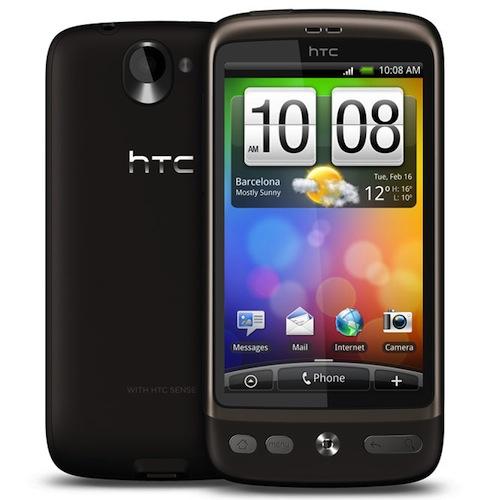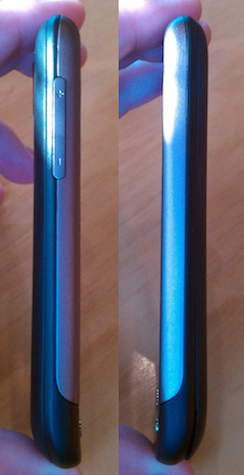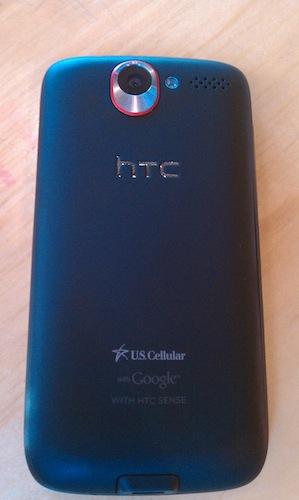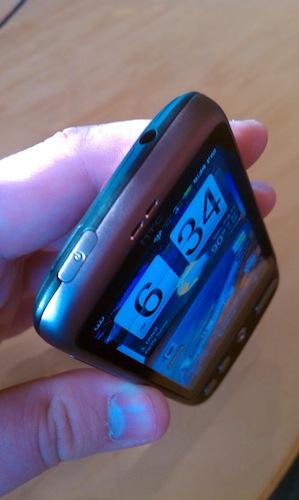
What's Good: Fast; offers a beautiful Super TFT display; fantastic build quality.
What's Bad: Desire has a strange way of calculating bars of service, and might lead people to believe that the device has reception issues.
The Verdict: With a fast processor, Android 2.1 with Sense, and a beautifully constructed body, the HTC Desire is US Cellular's best smartphone yet.

I enjoyed the Nexus One and its features, but secretly hoped that a Sense-laden variant would come to the States. Shortly thereafter, the DROID Incredible was announced, and it answered my hopes on a software front. But for someone coming from the Nexus One, I found myself missing the Nexus' metal build. After several months of speculation, a CDMA version of the HTC Desire was announced for US Cellular. A successor to the Nexus One in more ways than one, the HTC Desire is a nice high-end Android experience for a regional carrier.
The Desire is packaged in the same box as the international Desire, save for US Cellular logos. Inside, you get the device, battery, AC adapter module, USB cable, earbuds, 8 GB microSD card (installed in the phone), and instruction manuals. The phone is 4.7 inches tall, 2.4 inches wide, and 0.5 inch thick, so it falls in line with other mid-sized smartphones out there. At 4.76 ounces, it's relatively lightweight as well.

The left side houses the volume rocker, while the microUSB port is on the bottom. The power button, 3.5mm headphone jack are on the top, and the 5-megapixel camera is on the back, complete with a red ring around it. Unlike the Nexus One, the battery door encompasses the entire back of the device. Remove it to find the battery, camera, and microSD card slot. In place of capacitive buttons like those found on the Nexus One and HTC EVO 4G, the Desire offers four physical buttons - home, menu, back, and search (with the latter two attached together). For navigation, HTC replaced the trackball with their optical trackpad.

The Desire packs a 1 GHz Snapdragon processor, and like the Nexus One, it excelled at every task with little to no lag. On the software front, it ships with Android 2.1 with HTC's Sense UI pre-installed, a combination of sorts between the Nexus One and DROID Incredible. I've long argued that Android, even in the 2.1/2.2 form, has a better chance of wooing new smartphone buyers when a manufacturer "skin" (Motorola's Blur, HTC's Sense UI) is installed. In most cases, they're easier to use, and offer a stepping stone of sorts from the familiar territory of featurephones to the smartphone world.
In the Desire's case, it's the same version of Sense that ships with the DROID Incredible and EVO 4G. Among the changes, you get a customized dock (with shortcuts to menu, phone, and adding widgets), HTC's customized messaging application, and customized widgets (weather, messaging, calendar, and more). Overall, Sense seems to strike a nice balance between appeasing intermediate smartphone users, and swaying new people to the platform with an easy-to-use interface. In addition to the stock Android and HTC applications, the Desire ships with US Cellular's Tone Room Deluxe, My Contacts Backup, Your Navigator Deluxe (TeleNav).

The phone offers a 5.0-megapixel camera for snapping pictures and video, and while it's a bit outdated in comparison to the 8-megapixel shooters out there, I was sufficiently pleased with picture quality. Autofocus works well, and colors were relatively clear and crisp. The camera application is modified from the original Android version, and offers the ability to adjust brightness, contrast, saturation, sharpness, color effects (with grayscale, sepia, negative, solarize, posterize, and aqua as options), white balance, ISO settings, resolution, widescreen, and picture quality. Video quality was equally decent; not something I'd use to replace my video camera, but decent for a quick video recording here and there.
Since I'm not in a native US Cellular coverage area, I drove to one in North Carolina a few days ago for some quick testing. Call quality was very good in both native and roaming areas, with no distortion and an incredibly loud earpiece. My callers reported consistently strong sound quality, and I had no problems on my end. Speakerphone was loud as well, and I was able to hear my caller without issue in a busy gas station. I wasn't able to find a true "dead spot" when I traveled out of town to review the native call quality, but I will say that the Desire held all calls well, even when I had 0-1 bars of service.

On that note, the Desire seems to suffer from the same issue that plagues the DROID Incredible - that is, it shows a lower number of "bars" that aren't necessarily reflective of actual service. There were several times where I noticed that the Desire (which was roaming on Verizon in Charlotte) would have one bar of service, while the Motorola DROID X and Motorola DROID 2 would have 3-4 bars. When I compared the dBm of the Desire to the DROID 2, I found that while the Desire was showing less bars of service, it actually scored better in the dBm department. In other words, signal strength was actually better in some cases, but the phone registered a lower number of bars. For those that are worried, rest assured - it appears to be an issue with the indicator, and not with overall reception.
With EVDO Rev. A capabilities, data speeds were good throughout testing. I attained a download speed of 1,090 Kbps, and an upload speed of roughly 810 Kbps. The CNN mobile page loaded in about six seconds, ESPN.com loaded in about 29 seconds, and the PhoneDog home page loaded in 33 seconds. I was exceptionally pleased to see that US Cellular has signed data roaming agreements with Verizon, so those that use US Cellular don't have to resort to 1X when traveling outside of their native coverage area. Battery life has been surprisingly good, given that Desire is an Android device and I've been roaming 95 percent of the time I've had it. On the days where I was constantly roaming, I was able to make it through the day with moderate use like calling, text messaging, e-mailing, downloading apps, and browsing the web.

When the Desire was announced in February, I was hoping that a US variant would follow. Fast forward seven months, and it's finally here, available on US Cellular beginning on August 27th for $199.99 after rebate. Though time has passed and new devices have launched since, the Desire is nowhere near obsolete with its 1 GHz processor, 3.7-inch Super TFT display, 5.0-megapixel camera, and Android 2.1. It performs incredibly well, and the build quality is phenomenal. Be sure to check out the signal strength indicator, but overall, US Cellular customers should be very happy.